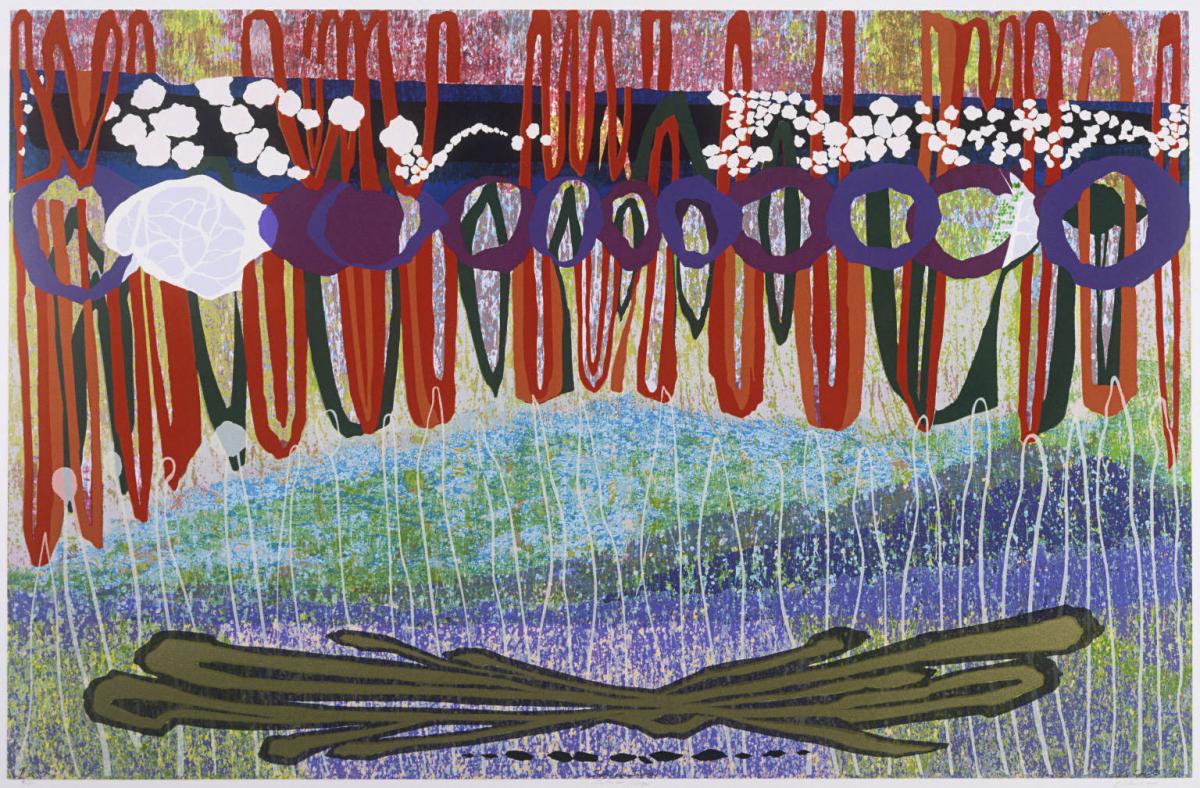Suite for Sergei
Lou Stovall ( 2007 )

My infatuation with Sergei Rachmaninov’s music led me to create a series of three silkscreen prints. The Sixth Movement, The Sixth Movement II, and Suite for Sergei, which is the third in my series, are each inspired by Rachmaninov’s The Four Piano Concertos, as performed by Vladimir Ashkenazy with the Concertgebouw Orchestra and conducted by Bernard Haitink. The four piano concertos are arguably the most beautiful, difficult and practically impossible pieces of music to perform. Ashkenazy has long been considered one of the finest musicians to have mastered the awesome, beautiful, and technical demands of Rachmaninov’s music. Suite for Sergei is not just a single piece of art; it builds upon my lasting appreciation of Rachmaninov’s creativity.
Sergei Rachmaninov in his own words: In my own compositions, no conscious effort has been made to be original, or Romantic, or Nationalistic, or anything else. I write down on paper the music I hear within me, as naturally as possible. I am a Russian composer, and the land of my birth has influenced my temperament and outlook. My music is the product of my temperament, and so it is Russian music…. What I try to do, when writing down my music, is to make it say simply and directly that which is in my heart when I am composing. If there is love there, or bitterness, or sadness, or religion, these moods become a part of my music, and it becomes either beautiful or bitter or sad or religious.[1]
Like Sergei Rachmaninov, I have followed the instincts of my heritage to share with you the making of the silkscreen print Suite for Sergei from creative thought to realization. My perception is that Rachmaninov began with the notion to set down his feelings about his environment. He loves Russia, as I love America. Encouraged by his music and passion for his surroundings, I sought to set down my own feelings about my love of the American landscape.
Suite for Sergei is constructed as if from a dream, intersecting elements of landscape and invention from my imagination. I thought that Rachmaninov may have had some recognition of a favored landscape in what might have been a dreamlike state of mind as he wrote down on paper the music that he was hearing in his imagination. I began with the landscape in a horizontal creation with hills rising on the right and a sense of a lake and sky in the near background. I superimposed twelve black shapes under the landscape to symbolize the piano. Twelve is my number to signal universal truths, and I feel those truths play out in Rachmaninov’s music. With gold flourishes outlined in black, I represented Rachmaninov conducting with his baton. The conducting of the orchestra is represented in gold ink, as I imagine his movements as golden moments. The orchestra and the instruments are represented by vertical, semi-elliptical lines in translucent white.
Our world is one of sound made beautiful with joyful thoughts of our environment. I represent this point of view with loops of color and visual pauses, just as pauses in music make space for artistic understanding. I have rendered the music as visual art in a free-flowing but ordered abstract composition which rises above the landscape. Many colors and shapes act as symbols and devices with which I hope to inspire in you, the viewer, a sense of wonder wrought of creativity. I use this method to suggest the action of making a foundation for thought and to further one’s emotional response to the nature of creativity that builds upon what lies below. In other words, art rises above all.
1. Sergei Rachmaninov, interview by David Ewen, The Etude, vol. 12, no. 59, December 1941.
Text by Lou Stouvall, adapted from Seeing Differently: The Phillips Collects for a New Century (The Phillips Collection in association with Giles, 2021)